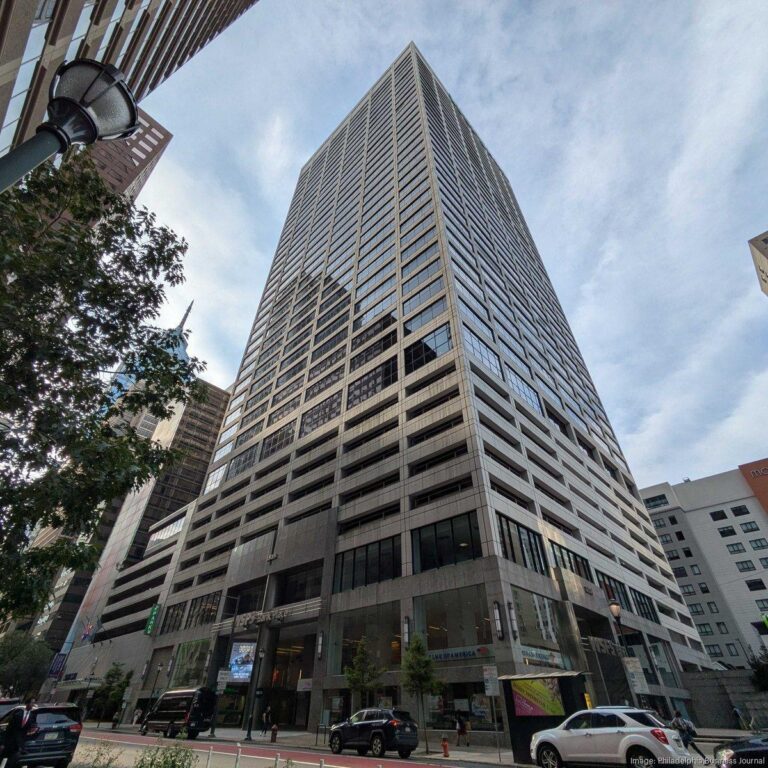1818 Market Street Enters Receivership Amid $239.5 Million Debt Burden
The iconic office skyscraper at 1818 Market Street has recently been placed under receivership due to escalating financial difficulties, carrying an overwhelming debt of approximately $239.5 million. This marks a pivotal moment in the building’s trajectory, raising critical questions about its future ownership and operational management within Philadelphia’s fiercely competitive commercial real estate sector.
Receivership Initiated to Address Mounting Financial Strain
Recognized as one of the largest commercial assets in the downtown financial district, 1818 Market Street’s receivership reflects the severity of its fiscal challenges. Creditors, citing unsustainable debt levels exacerbated by unfavorable market conditions, have sought court intervention to appoint a receiver. This legal oversight aims to stabilize the property’s operations, safeguard creditor interests, and strategically reposition the asset for long-term viability.
Key details of the property and its current status include:
- Outstanding Debt: $239.5 million in mortgage obligations
- Receivership Status: Court-appointed receiver now overseeing management
- Market Considerations: Potential adjustments to tenant leases and tenant composition
| Property Attribute | Information |
|---|---|
| Size | Exceeds 1 million square feet |
| Location | Heart of downtown financial district |
| Occupancy Rate | Approximately 85% |
Underlying Causes of Financial Distress at 1818 Market Street
The financial turmoil at 1818 Market Street stems from a confluence of market shifts, operational hurdles, and mounting debt pressures. The office market has experienced a glut of available space, driving vacancy rates upward and sharply curtailing rental revenues. Additionally, the widespread adoption of hybrid and remote work models has diminished demand for traditional office environments. Rising operational expenses, including maintenance and utilities, have further squeezed cash flow, limiting the building’s capacity to invest in tenant-attracting upgrades.
Moreover, rigid loan terms and refinancing constraints have compounded the situation, with the property’s substantial $239.5 million debt load restricting financial flexibility. The principal factors contributing to the current predicament are summarized below:
- Elevated Vacancy Rates: Declining lease renewals amid economic uncertainty
- Debt Servicing Challenges: Inflexible loan conditions limiting refinancing options
- Rising Operational Costs: Inflation-driven increases in utilities and maintenance
- Shifting Tenant Preferences: Reduced office space demand due to hybrid work trends
| Factor | Effect | Metric |
|---|---|---|
| Vacancy Rate | Increasing, reducing rental income | +18% year-over-year |
| Debt Load | Restricts refinancing possibilities | $239.5 million |
| Operational Expenses | Rising costs impacting cash flow | +12% year-over-year |
| Tenant Demand | Declining due to remote work adoption | -15% occupancy |
Consequences for Tenants and Local Market Dynamics
The receivership of 1818 Market Street, encumbered by its substantial debt, has generated immediate uncertainty among tenants. Many face questions about lease renewals and potential rent modifications as the new management team assumes control. Retail tenants, in particular, are concerned about maintaining affordable lease terms during the financial restructuring. Both business operators and community members worry about possible disruptions to daily activities and the availability of communal spaces within the building.
On a broader scale, this development is poised to influence the local commercial real estate landscape in several ways:
- Rental Market Adjustments: Lease prices may temporarily stabilize or decline, creating opportunities for new tenants.
- Investor Scrutiny: Market participants will closely observe the recovery process, potentially affecting acquisition and investment decisions.
- Community Engagement: Local stakeholders are calling for transparency and tenant protections throughout the transition.
| Tenant Type | Level of Impact | Expected Changes |
|---|---|---|
| Retail Businesses | High | Lease Rate Reevaluation |
| Office Occupants | Moderate | Delays in Lease Renewals |
| Service Providers | Low | Continued Stable Operations |
Guidance for Stakeholders Amid Receivership Proceedings
To navigate the complexities of the receivership at 1818 Market Street, stakeholders should emphasize clear communication and adaptive strategies. Recommended actions include:
- Consistent Communication: Maintain open lines with the receiver’s office to receive timely updates on operational changes and key developments.
- Independent Valuation: Commission third-party appraisals to accurately gauge the property’s market worth relative to its debt obligations.
- Proactive Negotiations: Collaborate with lenders and potential investors to explore restructuring or refinancing pathways.
- Operational Stability: Ensure property management continues delivering high-quality services to uphold tenant confidence and preserve rental income streams.
Below is a summary of immediate priorities tailored to various stakeholder groups:
| Stakeholder | Main Concern | Suggested Actions |
|---|---|---|
| Creditors | Maximizing debt recovery | Prioritize claims and evaluate restructuring options |
| Investors | Asset performance and acquisition opportunities | Review portfolios and consider strategic bids |
| Tenants | Lease security and operational continuity | Monitor lease terms and prepare contingency plans |
| Property Managers | Maintaining service quality | Sustain operations and promptly report issues |
Final Thoughts: Monitoring the Path Forward for 1818 Market Street
As 1818 Market Street undergoes receivership under the weight of its $239.5 million debt, all eyes remain on how this high-profile asset will navigate its financial restructuring. This case highlights the broader challenges confronting commercial real estate amid evolving market dynamics and economic pressures. The outcomes will significantly influence tenants, investors, and the Philadelphia commercial property landscape, making ongoing developments critical to watch.








